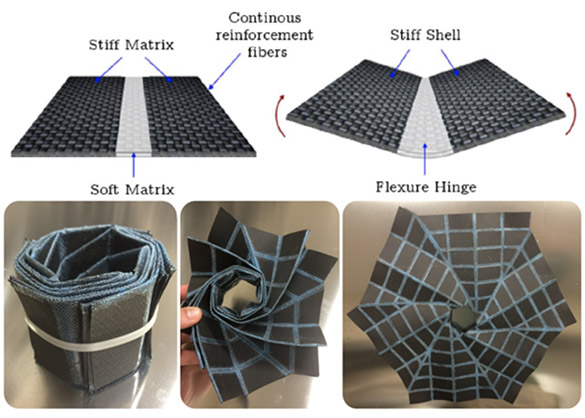Composite Origami for Spacecraft Solar Arrays and Deployable Structures
PI: Mark Pankow, North Carolina State University
PI: Mark Pankow, North Carolina State University

- TA12 Materials, Structures, Mechanical Systems and Manufacturing
Lightweight strain-energy deployed composite origami is a good match for solar arrays, expanding structures, and deployable habitats. The objective of this experiment is to understand the mechanics of deployment—namely, repeatability and degradation.
The composite origami will enable large-scale deployable solar arrays with exceptional packing efficiency. This technology is currently at TRL 4 based on laboratory testing at NCSU. Successful deployment during zero-gravity test flights will advance it to TRL 5.
Scalable solar power for any space-based mission
Large-scale power generation for Mars and deep-space missions
Deployment of habitat structures for human-tended exploration missions
Technology Details
-
Selection DateTechFlights19 (Oct 2019)
-
Program StatusActive
- 0 Parabolic
Development Team
-
PIMark Pankow
-
Organization
-
SponsorNASA
-
More Information

